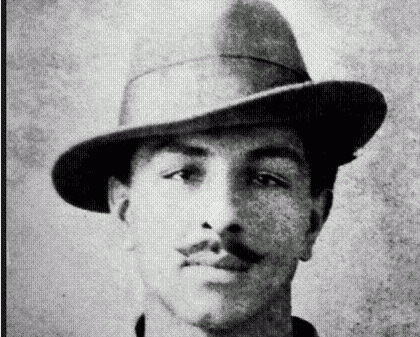The Ballad Of Bhagat Singh: An Independence Hero Cherished By India, Forgotten By The West

Eighty-two years ago, a handsome, mustachioed 23-year-old Indian nationalist was hanged in a Lahore prison.
Bhagat Singh is an independence hero glorified in almost equal measure by both India and Pakistan, but unkown elsewhere.
Born in 1907 to a family of Sikh revolutionaries in Jaranwala Tehsil in what was then British India and now in the Punjab province of Pakistan, Singh became an ardent socialist and revolutionary who strongly advocated for the removal of the British from India.
Originally enamored with Mahatma Gandhi’s call for nonviolence, Singh moved away from peaceful resistance to colonial rule after a series of violent acts by the British police, including the infamous massacre of hundreds of unarmed men, women and children at Jallianwala Bagh in Amritsar in 1919.
Despite his youth, Singh spent the 1920s engaged in various anti-British activities, including the formation of political parties, the editing of socialist newspapers and the organization of strikes and others forms of protest. He even eschewed getting married in favor of devoting himself to his political causes.
Singh became a fugitive from justice in 1929 after he participated in a series of bombings as well as the murder of a British policeman – an act of vengeance following the assassination of Lala Lajpat Rai, a leading nationalist in Punjab, by forces of the British Raj.
After turning himself in, Singh underwent a nearly four-month fast in jail – an act that made him a national figure in India.
Following a lengthy series of trials, Singh was hanged on March 23, 1931, in prison in the city of Lahore (now in Pakistan) with two other comrades. The execution sparked a series of riots, strikes and demonstrations across northern India, and even led some youths to criticize Gandhi, who had himself questioned the value of Singh’s violent insurgency.
In 1932, a visiting British priest and peace campaigner, C.F. Andrews, described the state of revolutionary fervor in India in the wake of Singh’s death thusly: “The scene in India at the present time is that of the Roman Empire nineteen-hundred years ago. There was the same vast order outwardly maintained. But within this area of apparent calm a surging, heaving ferment had suddenly begun to appear like volcanic lava cracking through the surface of the soil.”
Singh is a largely forgotten figure of the Indian independence struggle in the West, but in India, he has almost equal status with Gandhi and nationalist hero Subhash Chandra Bose. The Parliament in New Delhi is graced by bronze statues of all three men. A portrait of Singh also hangs inside the parliament itself.
Indeed, to Indians and many Pakistanis, Bhagat Singh is a combination of Robin Hood, George Washington and Robert the Bruce. Bollywood has already released at least six films based on his life.
Over the weekend, in Lahore, Pakistanis also commemorated Singh’s death.
The News International reported that at the memorial, Abdullak Malik, the president of the Bhagat Singh Foundation, asked the governments of both India and Pakistan to declare all freedom fighters of the independence movement “national heroes.”
Singh’s grand-nephew Abhitej Singh Sandhu told the DNA news agency on India: “It’s sad that the same system that was being used by the British 66 years ago is still being followed to suppress the voice of citizens. Today’s youth must understand that Singh’s fight was not against anybody but man-to-man exploitation.”
M. Swaraj, the president of the left-wing Democratic Youth Federation of India, said Bhagat Singh remains relevant more than eight decades after his death.
“Our organization can legitimately claim Bhagat Singh’s legacy,” he told the Deccan Chronicle.
“For us Bhagat Singh is India’s Che Guevara and his slogan ‘Inquilab Zindabad’ [‘Long live the revolution’] will continue to reverberate among people who fight for just causes.”
© Copyright IBTimes 2024. All rights reserved.











